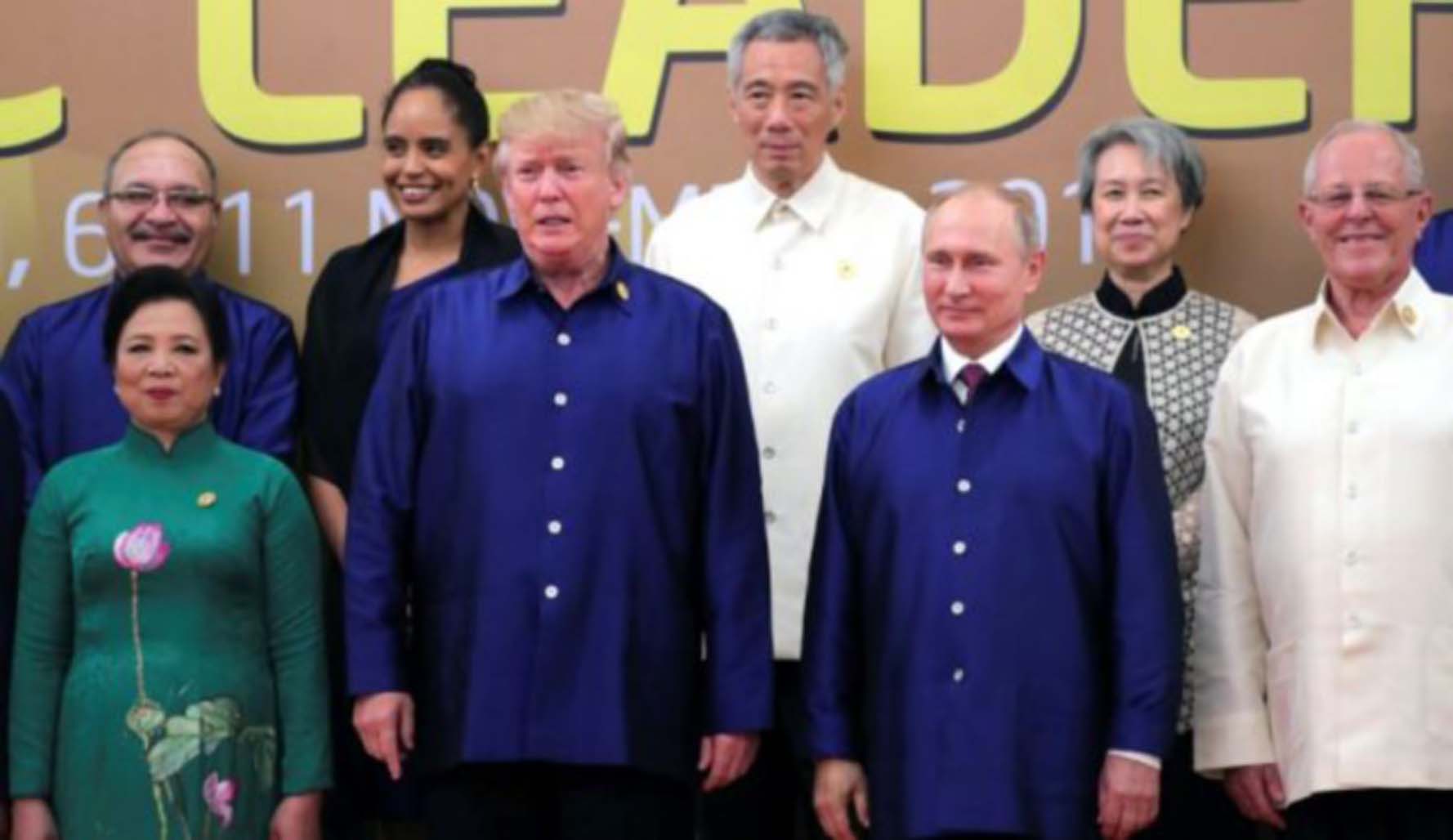If the APEC forum ever provided a testing ground to estimate how far the United States can resuscitate American power in Asia, the summit meeting in Da Nang signals that it is going to be a long haul, if at all. The point is, much as the US emphasizes its military posturing, the battle for influence in Asia will rise and fall on economics instead.
The US lost face badly by withdrawing from the Trans-Pacific Partnership (TPP) agreement. The APEC’s defining mission in Da Nang was to hold the line on an open trading system. Asia’s economic dynamism is vitally dependent on external enviornment. Peter Drysdale, Emeritus Professor at the Australian National University, wrote last week: “Confidence in the global trading system is important to Asia.
It has underpinned Asian interdependence, economic prosperity and political security in the past and it will continue to do so in the future. Thus, in guarding these strategic global interests, Asia has a new and critical role to play. APEC is the theatre in which the action must begin.”
From this perspective, when US President Donald Trump addressed the APEC summit on Friday, it was the wrong speech at the wrong place. (Transcript). Trump threatened that the US will no longer tolerate “chronic trade abuses”, complained about trade imbalances, alleged that free trade has cost millions of American jobs, equated “mutual respect and mutual benefit” with “reciprocal trade” and railed against the World Trade Organization. Trump slammed the door shut on regional free trade agreements. It was transactional diplomacy writ large.
Yet Asian leaders assert the priority of multilateral solutions to global trading problems. With the TPP a non-starter, the ASEAN-led Regional Comprehensive Economic Partnership is the only strategy ahead and the US isn’t even at the table. On the contrary, it couldn’t have been lost on the Asian audience that the speech by Chinese President Xi Jinping, which followed immediately after Trump’s, presented a starkly different vision of the future of global trade. (Transcript)
President Xi asserted that globalization is irreversible and espoused China’s credentials as the new champion of world trade. “We should support the multilateral trading regime and practise open regionalism to allow developing members to benefit more from international trade and investment,” Xi urged. He spoke about the digital economy, quantum science, artificial intelligence, etc. outlining a vision of the future that is connected, and comprehensive.
By the way, even as Xi was addressing the APEC summit, China announced historic plans to ease limits on foreign ownership of financial services groups. The FT reported that Beijing proposes to relax or eliminate ownership limits in commercial banking, securities, futures, asset management and insurance. China has used joint venture requirements and ownership caps in a broad range of industries to protect domestic groups from competition and induce sharing of foreign technology and management expertise with local partners.
Xi said in his speech, “In the next 15 years, China will have an even larger market and more comprehensive development. It is estimated that China will import US$24 trillion worth of goods, attract US$2 trillion inbound direct investment and make US$2 trillion of outbound investment.”
In comparison, Trump is forever raising the bar of partnership. When three ASEAN Prime Ministers Malaysia, Thailand and Singapore visited Washington recently, Trump celebrated the events as shopping transactions. Asians make gifts as material presentations of friendship, but Trump is blasé and flaunts it as triumph for ‘America First’.
During Malaysian Prime Minister Najib Razak’s visit, Khazanah Nasional (Malaysian government’s sovereign wealth fund) and the Employees Provident Fund (Malaysia’s national pension fund) announced several billion dollars of investments in equity and infrastructure projects in the US; Malaysia Airlines pledged to explore options for acquiring more Boeing jetliners and General Electric engines to the tune of US$10 billion.
Thailand’s Prime Minister Prayut Chan-ocha promised that his country’s military would acquire Blackhawk and Lakota helicopters, a Cobra gunship, Harpoon missiles and F-16 fighter jet upgrades to be topped off with 20 new Boeing jetliners for Thai Airways.
Siam Cement Group agreed to purchase 155,000 tonnes of coal to ease the plight of US workers in the much-bandied ‘Rust Belt’, while Thai petroleum company PTT agreed to invest in shale gas factories in Ohio. Prayut and Trump also signed a memorandum of understanding to facilitate an estimated US$6 billion worth of investments that will purportedly generate more than 8000 jobs in the US.
Singapore showcased its purchase of 39 aircraft from the Boeing Corporation with the attached tagline of generating 7000 jobs in the continental United States.
(At the televised signing ceremony, Trump smiled broadly and jabbed jocularly at the Boeing CEO, uttering very audibly to the television cameras “That’s jobs, American jobs, otherwise don’t sign!” Here’s the catch: Trump’s 11-day Asian tour may only have reinforced the perception of Southeast Asian elites that the US is losing strategic ground to China.
Simply put, the efficacy of an Asian strategy predicated primarily on military strength is uncertain and unsustainable. The APEC Declaration on Saturday (here) testifies that Xi’s speech was in sync with the spirit of the times, while Trump stuck out as sound and fury signifying nothing.
At a time when Chinese tech giants are shrewdly positioning themselves to capitalize on an expected boom in ASEAN’s digital economy in the coming decade, when the ‘One Belt, One Road’ is steadily marching ahead, underwriting a network of trade and investment with China at its centre and creating a new global supply chain, the regional states are palpably experiencing the limits of US power.
To compound matters, when Trump celebrates trade deals worth $253 billion with China, Asians must wonder that all roads ultimately lead to Beijing.


